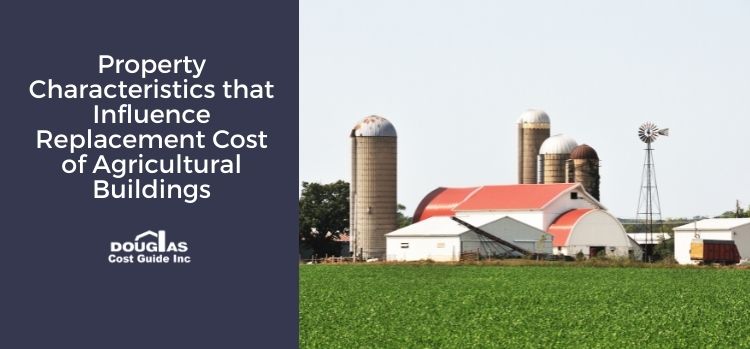Estimating replacement costs for agricultural structures can be a daunting task because not only can costs vary widely based on numerous factors, but the assessed value of the building is often vastly different from its replacement cost. The Douglas Agricultural Cost Guide is your definitive guide to predicting your replacement costs, backed by the latest industry data and trusted by professionals across industries.
Key Factors that Influence Your Replacement Cost
Total Floor Area
Perhaps counterintuitively, the replacement cost for larger buildings is slightly lower due to economies of scale.
Sidewall Height
The higher your sidewall is, the greater the replacement cost. Not only is the wall area simply larger, but greater wind pressure on the sidewalls will mean that more bracing and structural support is required.
Interior Finishes
Replacement cost varies based on the materials used on the walls and ceilings. Corrugated steel sheathing and / or plywood are common interior finishes / linings, whereas plastic coated panels, corrugated plastic panels, or solid plastic panels are construction materials that are often considered as specialty items and may come at an increased cost.
Location
The location of the structure on the property impacts cost depending on terrain. For instance, if a structure is located on sloping terrain and more material is needed to level the interior floor area, the replacement cost will increase.
Ventilation
Livestock barns sometimes lack insulation, wall cladding and interior lining to allow for airflow and ventilation. If large sidewall openings are covered only with a curtain when weather conditions deteriorate, your replacement cost will slightly decrease
Excessive Door Openings
An abundance of oversized door openings can affect your replacement cost.
Quality of Construction
The quality of materials used, as well as the skill and precision of the contractor during construction, can raise or lower replacement costs.
Type of Livestock Housed
Different animals require different living conditions. Cattle typically need a larger space and higher ceiling, while poultry or swine will need a lower ceiling and higher insulation for easier temperature control.
Extra Features
Some structures have extra features, such as a concrete floor in an implement storage shed or an enclosed manure storage structure (as opposed to one that is open-sided). These features can both add or reduce costs depending on their utility and desirability.
Types of Agricultural Buildings We Can Estimate
The replacement costs for an agricultural building are as individual as the structures themselves. That’s why our specialized valuation tools are essential for accurate cost estimates.
We can estimate for all kinds of agricultural buildings across various farming industries, such as:
- Livestock housing
- Silos
- Manure storage
- Feed storage
- Commodity storage
- Machinery storage
- Swine facilities
- Greenhouses
Eliminate Sticker Shock with Douglas Agricultural Cost Guide
To precisely estimate the replacement cost of your agricultural buildings, you need a compilation of accurate, up-to-date data, along with smart tools that help you with complex questions and calculations. Douglas Agricultural Cost Guide is industry-tested, used by professionals, and has become the definitive guide for establishing replacement costs. Subscribe today and discover why our guide has been a trusted resource for over thirty years!

